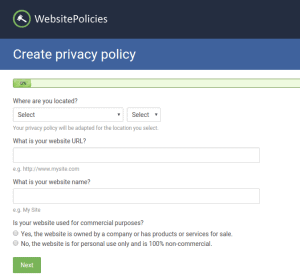Multimedia Added to Your PR Content - DailyBlogTips |
| Multimedia Added to Your PR Content Posted: 30 Mar 2016 10:49 AM PDT Engaging content is more essential than ever in today's busy media landscape, and one smart way to heighten the engagement factor of yours is with multimedia. Adding multimedia is both an art and a science. If done right, it can help your content gain a competitive edge. If your photos are boring, your videos aren't helpful, and your infographics aren't outstanding, you'll miss out on valuable traffic that can lead to sales. The good news is, there are some standards and best practices you can rely on to make sure your multimedia content checks out. Here are the answers to 6 questions you might have about adding multimedia to PR content – from blog posts to press releases. What is multimedia? Multimedia refers to the electronically delivered combination of media – or methods of communication, including text, graphics, video, animation, and sound that can be accessed in an interactive way. Much of the content online today falls within this scope. How has the use of multimedia in content changed over the last 5 years? In the past 5 years, internet use worldwide has drastically increased. The digital revolution has had a major impact on the way we communicate – advances in technology have influenced the development of multimedia systems such that virtually all computers in use today have some capacity to create and display multimedia. Here are some stats that point to the increasing importance of multimedia:
What are Google Panda and Google Hummingbird, and how do they affect multimedia? Of course, if your content isn't being found online, multimedia won't work for you. You want to make sure your content is recognized by Google and served up for the right queries. Google Panda (which rolled out in July 2015), and aimed to downrank pages that it deemed low quality. According to a Google spokesperson, "When our algorithms look out for unique, compelling, and high-quality content, that can have many forms, including images, videos, or other kinds of embedded rich-media … it helps us a lot to have context of any content like that, and we generally pick up that context in the form of text on pages that embed that kind of content." So, provide text around your images and video (captions and surrounding text) as well as alt text to give Google cues. Google's Hummingbird update took place in 2013, and aimed to facilitate ranking of pages based on semantic search. Content must be created to match the more-conversational queries of searchers. Not only does that include conversational writing but according to Hubspot, "the more you can diversify your brand with different digital media assets, the more likely you are to curry favor with the search engines and the searchers" – Google now delivers a blend of multimedia results including images, product listings, reviews, and photos. Google's algorithm can change on a dime, but with every update Google has made, it has prized higher-quality content. Content creators who are genuinely interested in providing valuable, engaging and clear information – in the forms readers want – will not be at a loss. Help Google understand the context of your multimedia content by adhering to these optimization best practices:
Optimizing press releases with multimedia and links Today’s high-performance press releases, like content, include multimedia assets as well as well-placed links, compelling headlines and engaging CTAs. They’re created with shareability and search engine-friendly language in mind. In content as in news releases, Google will penalize an overuse of keywords or links, so write press releases and content with links that lead naturally to other content as you see fit, and incorporate keywords in a way that is natural. Wanna learn how to make more money with your website? Check the Online Profits training program! |
| You are subscribed to email updates from Daily Blog Tips. To stop receiving these emails, you may unsubscribe now. | Email delivery powered by Google |
| Google Inc., 1600 Amphitheatre Parkway, Mountain View, CA 94043, United States | |



 While Google's algorithms for determining rankings change seemingly every month, one factor always remains: Links. So far, link building is hands-down the most important activity you can do to improve your site's SEO ? more important than keyword selection, meta-tag creation, and content optimization combined. The fact is, the more links on other sites that point to yours, the easier search engines can find your site.
While Google's algorithms for determining rankings change seemingly every month, one factor always remains: Links. So far, link building is hands-down the most important activity you can do to improve your site's SEO ? more important than keyword selection, meta-tag creation, and content optimization combined. The fact is, the more links on other sites that point to yours, the easier search engines can find your site. There is a reason Google is trying to curb the popularity of artificial link-building: It hurts the search engine's ability to provide relevant and valuable results to Web users. When the most optimized pages always outrank those most applicable to search keywords, users leave discouraged, and the Internet as a whole suffers.
There is a reason Google is trying to curb the popularity of artificial link-building: It hurts the search engine's ability to provide relevant and valuable results to Web users. When the most optimized pages always outrank those most applicable to search keywords, users leave discouraged, and the Internet as a whole suffers.